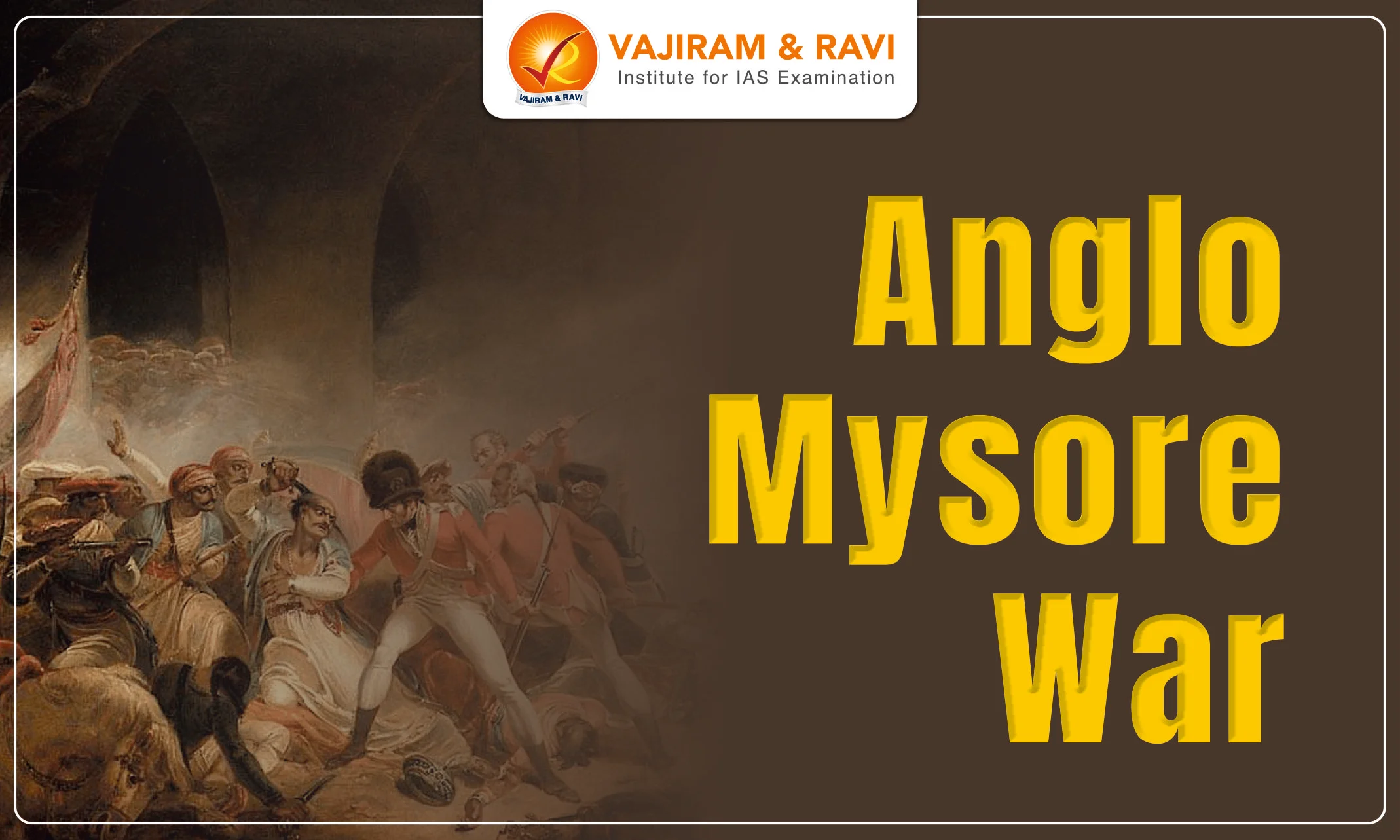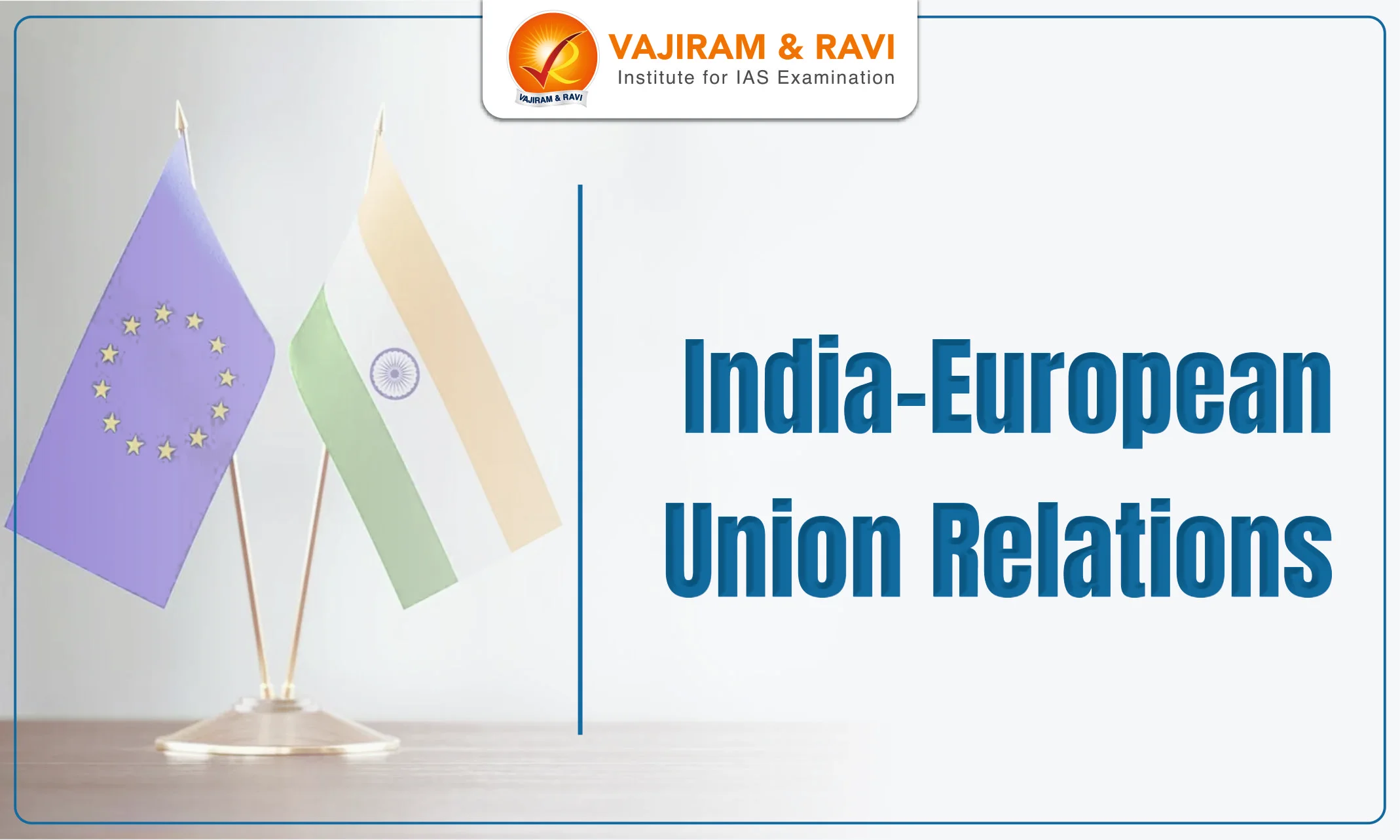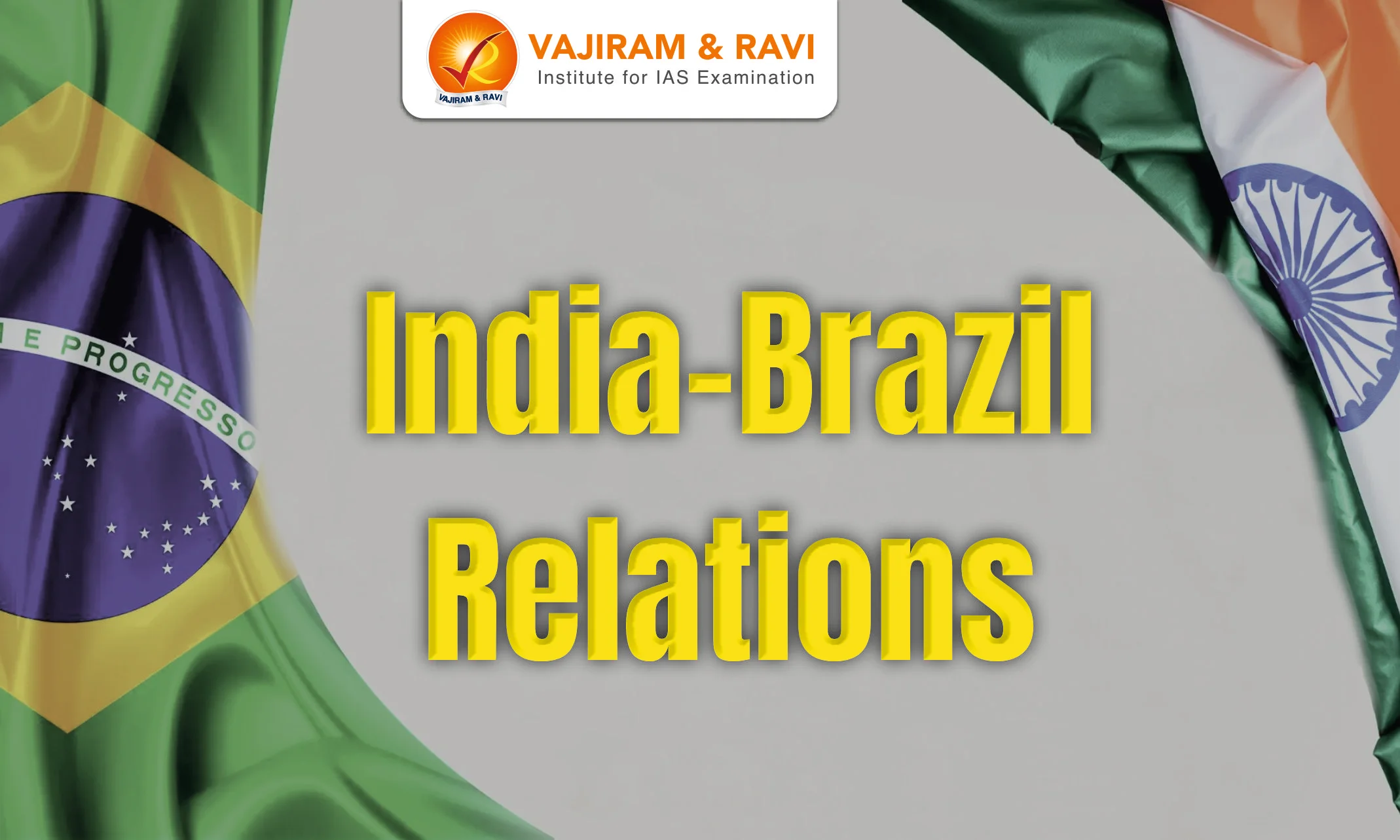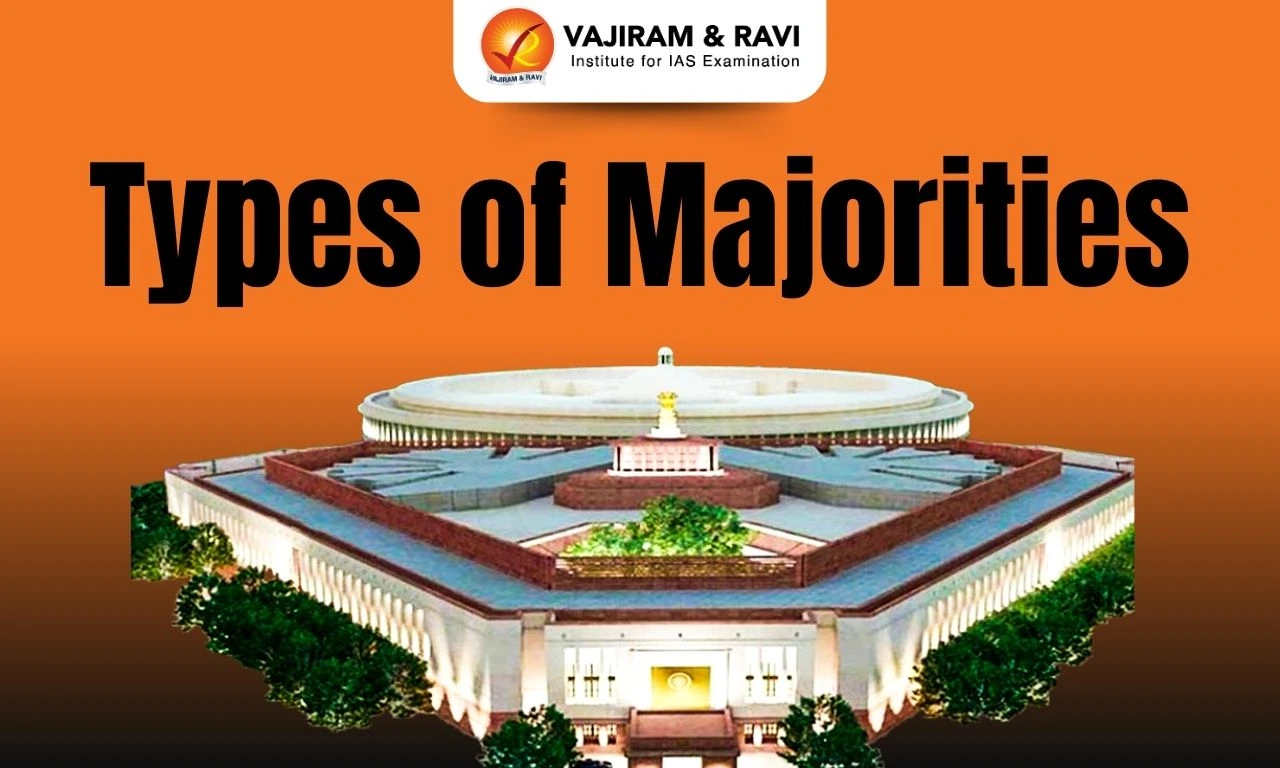The Anglo-Mysore Wars (Carnatic Wars) and the rise of the Wodeyar Dynasty marked a significant period in South Indian history, characterized by conflicts between the British and the French for territorial supremacy and the emergence of the Wodeyars as rulers of Mysore. Led by influential figures like Haidar Ali and Tipu Sultan, the Wodeyars' rise and subsequent wars shaped the political landscape of the region, impacting both Indian and European interests.
The Anglo-Mysore Wars, spanning four major conflicts, saw shifts in alliances and territorial changes, culminating in the eventual defeat of Tipu Sultan and the imposition of British control over Mysore. These events have left a lasting impact on India's colonial history and the struggle for power between European colonial powers in the Indian subcontinent.
About Anglo Mysore Wars
The Anglo-Mysore Wars were a series of four conflicts fought in the latter part of the 18th century between the Sultanate of Mysore and the British East India Company, along with their allies, the Maratha Empire, the Kingdom of Travancore, and the Kingdom of Hyderabad.
Anglo-Mysore Wars The Wodeyar Dynasty
After the Battle of Talikota in 1565, which dealt a devastating blow to the Vijayanagara kingdom, several smaller kingdoms emerged from its remnants.
- Wodeyar kingdom: In 1612, a Hindu kingdom under the Wodeyars arose in the region of Mysore. Chikka Krishnaraja Wodeyar II ruled from 1734 to 1766.
- Prominence: During the second half of the 18th century, Mysore gained significant strength under the leadership of Haidar Ali and Tipu Sultan.
- English perception: The English perceived their political and commercial interests in South India to be at risk due to Mysore's proximity to the French and Haidar Ali and Tipu Sultan's control over the lucrative trade of the Malabar coast.
- Growing power: Additionally, Mysore's growing power posed a threat to English control over Madras.
Anglo-Mysore War Rise of Hyder Ali
In the early 18th century, two brothers named Nanjaraj and Devaraj reduced Chikka Krishnaraja Wodeyar to a mere puppet.
- Haidar Ali: He was born in 1721 into an obscure family and began his career as a horseman in the Mysore army under the ministers Nanjaraj and Devaraj.
- Despite his lack of education, Haidar Ali possessed a keen intellect and displayed great energy and determination.
- Incursions: The repeated incursions of theMarathas and Nizam's troops into Mysore's territories resulted in heavy financial demands imposed by the aggressors. This weakened Mysore financially and politically.
- De Facto ruler: Recognizing the need for a leader with military prowess and diplomatic skills, Haidar Ali seized the opportunity and became the de facto ruler of Mysore in 1761.
- Realisation: He understood that the Marathas, known for their mobility, could only be countered with swift cavalry, while the cannons of the French-trained Nizami army required an effective artillery response.
- Weapons acquisition: Haidar Ali also recognised the importance of matching the superior arms from the West by acquiring weapons from the same source or manufacturing them using similar techniques.
- French assistance: To achieve these objectives, Haidar Ali sought the assistance of the French and established an arms factory in Dindigul. He also introduced Western methods of training for his army and employed his diplomatic skills to outmaneuver his opponents.
- Success: With his superior military abilities, he successfully captured various regions such as Dod Ballapur, Sera, Bednur, and Hoskote between 1761 and 1763. Haidar Ali also brought the troublesome Poligars of South India under submission.
- Attacks of Maratha: However, following their defeat at Panipat, the Marathas, under Madhavrao, launched attacks on Mysore and defeated Haidar Ali in 1764, 1766, and 1771. Haidar Ali had to pay large sums of money to the Marathas to secure peace.
- Haider’s retaliation: After Madhavrao died in 1772, Haidar Ali retaliated and raided the Marathas multiple times from 1774 to 1776. He not only recovered the territories he had previously lost but also captṣured new areas.
- Estimation: Overall, Haidar Ali's strategic military skills, the establishment of the arms factory, and his diplomatic maneuvers played a significant role in strengthening Mysore and expanding its influence.
The First Anglo-Mysore War (1767-69)
The First Anglo-Mysore War (1767–69) was a significant conflict between the Kingdom of Mysore, led by Hyder Ali, and the British East India Company. Hyder Ali's military prowess and strategic alliances enabled him to challenge British expansion in South India. The war concluded with the Treaty of Madras in 1769, which mandated mutual restoration of conquests and the exchange of prisoners. This conflict marked the emergence of Mysore as a formidable power in the region, setting the stage for future confrontations with the British.
Background of First Anglo-Mysore War
Against the backdrop of the First Anglo-Mysore War (1767-69), the British, following their swift success in Bengal, were confident in their military strength. They forged a treaty with the Nizam of Hyderabad in 1766, securing the Northern Circars in exchange for promising to protect him from Haidar Ali, who was already engaged in territorial disputes with the Nawab of Arcot and had ongoing tensions with the Marathas.
- Shifting Alliances: As a result, alliances shifted, and the Nizam, Marathas, and English formed a unified front against Haidar Ali.
- Haidar displayed considerable tact and diplomatic skill. He paid the Marathas to maintain neutrality and convinced the Nizam to become his ally by promising to share the conquered territories.
- Together with the Nizam, Haidar Ali launched an attack on the Nawab of Arcot.
Course of First Anglo-Mysore War
The First Anglo-Mysore War (1767-69) dragged on for about a year and a half without a decisive conclusion, with both sides unable to achieve a clear victory. Sensing the need for a change in strategy, Haidar Ali surprised the English by suddenly appearing at the gates of Madras.
Outcome of First Anglo-Mysore War
The First Anglo-Mysore War ended with the Treaty of Madras on April 4, 1769, as a result of the chaotic and panicked situation in Madras. The English, under pressure, were forced to negotiate a humiliating treaty with Haidar which required the exchange of prisoners and mutual restitution of conquered territories. Additionally, Haidar Ali secured a promise of English support if he were to face an attack from another power.
The Second Anglo-Mysore War (1780-84)
The Second Anglo-Mysore War (1780–1784) was sparked by Haidar Ali's accusations of the English breaching the Treaty of Madras and their failure to support him during a Maratha attack in 1771. Seeking alliances, Haidar formed a coalition with the Marathas and the Nizam, and initially achieved successes, including capturing Arcot and defeating the English at Porto Novo. However, after Haidar died in 1782, his son, Tipu Sultan, continued the war without significant gains, leading both sides to negotiate the Treaty of Mangalore in 1784, which restored conquered territories.
Background of Second Anglo-Mysore War
The Second Anglo-Mysore War (1780-1784) was sparked by Haidar Ali's deep-seated grievance that the English had violated the Treaty of Madras, particularly when they failed to assist him in 1771 during his conflict with the Marathas.
- Additionally, Haidar found the French more supportive than the English, especially in providing essential war materials like guns, saltpetre, and lead.
- Through the French possession of Mahe on the Malabar coast, Haidar secured French military supplies, which intensified English concerns, particularly as the French supported the American War of Independence.
- In response, the English attempted to capture Mahe, an action Haidar perceived as a direct challenge to his authority, ultimately setting the stage for the war.
Course of Second Anglo-Mysore War
In the second phase of the Anglo-Mysore War, Haidar Ali allied with the Marathas and the Nizam, launching an attack in the Carnatic region. He captured Arcot and defeated the English forces under Colonel Baillie in 1781.
- However, the British, led by Sir Eyre Coote, managed to detach both the Marathas and the Nizam from Haidar's side.
- Despite this setback, Haidar boldly continued his campaign, although he faced defeat at Porto Novo in November 1781.
- Nevertheless, Haidar regrouped his forces, eventually defeating the English and capturing their commander, Braithwaite.
Outcome of Second Anglo-Mysore War
The Second Anglo-Mysore War concluded with the Treaty of Mangalore in March 1784 after Haidar Ali passed away from cancer on December 7, 1782. Following his death, his son, Tipu Sultan, continued the war for another year, though no decisive victories were achieved by either side. Frustrated by the prolonged and inconclusive conflict, both the British and the Mysore forces agreed to peace terms. The treaty stipulated the mutual return of territories that had been captured by both sides during the course of the war.
The Third Anglo-Mysore War (1789-92)
The Third Anglo-Mysore War (1789–1792) was triggered by Tipu Sultan's conflicts with the English and his territorial ambitions. After a dispute with the state of Travancore, Tipu declared war against the English, but the British, aligned with the Marathas and the Nizam, mounted a powerful response. Despite initial setbacks for the British, including a defeat at the hands of Tipu's forces, they eventually gained the upper hand. The war concluded with the Treaty of Seringapatam in 1792, marking a significant loss for Tipu Sultan.
Background of Third Anglo-Mysore War
The Third Anglo-Mysore War began due to a dispute between Tipu Sultan and the state of Travancore. Travancore had acquired the territories of Jalkottal and Cannanore from the Dutch in the Cochin state, which Tipu considered a breach of his sovereign rights, as Cochin was a vassal under his rule. In response, Tipu declared war on Travancore in April 1790, aiming to restore his authority over the region.
Course of Third Anglo-Mysore War
In the Third Anglo-Mysore War, the British aligned with Travancore and launched an attack on Tipu Sultan. Tipu initially achieved a significant victory in 1790, defeating the British forces under General Meadows. However, in 1791, Cornwallis took command and led a large army, capturing key locations such as Ambur, Vellore, and Bangalore.
- Despite Tipu’s resistance, the British, supported by the Marathas and the Nizam, advanced towards Seringapatam, eventually forcing Tipu to retreat.
- After fierce opposition from Tipu, the British captured Seringapatam and imposed heavy terms on him under the Treaty of Seringapatam.
Outcome of Third Anglo-Mysore War
The Treaty of Seringapatam, signed in 1792, concluded the Third Anglo-Mysore War. As per the terms of the treaty, the victorious forces took control of nearly half of Mysore’s territory. The English acquired regions such as Baramahal, Dindigul, and Malabar, while the Marathas gained control over areas surrounding the Tungabhadra River and its tributaries, and the Nizam seized territories extending from the Krishna River to beyond the Pennar.
- Additionally, Tipu Sultan was compelled to pay a war indemnity of three crore rupees, half of which was to be paid immediately, with the remainder in installments.
- As a guarantee, Tipu's two sons were taken as hostages by the English.
The Fourth Anglo-Mysore War (1798-99)
The Fourth Anglo-Mysore War fought in 1799, marked the final conflict between the British and Tipu Sultan, the ruler of Mysore. Tensions escalated as Tipu's alliances with the French and his refusal to accept British dominance alarmed Lord Wellesley, who sought to subdue him through force. The British, supported by the Nizam and the Marathas, launched a decisive campaign against Mysore. This war culminated in the fall of Seringapatam and the end of Tipu Sultan's reign, reshaping the political landscape of southern India.
Background of Fourth Anglo-Mysore War
Between 1792 and 1799, both the English and Tipu Sultan took time to recover from the losses of the Third Anglo-Mysore War. Tipu Sultan complied with the conditions of the Treaty of Seringapatam, fulfilling his obligations and securing the release of his sons. In 1796, after the death of the Hindu ruler of the Wodeyar dynasty, Tipu refused to place the minor Wodeyar prince on the throne and instead declared himself Sultan.
- This decision was driven by his desire to avenge his humiliating defeat and the terms imposed by the Treaty of Seringapatam.
- Furthermore, in 1798, Lord Wellesley succeeded Sir John Shore as the new Governor-General of India.
- Possessing imperialist ambitions, Wellesley grew concerned about Tipu's growing alliance with the French and aimed to either eradicate Tipu's independent existence or bring him under submission through the implementation of the Subsidiary Alliance system.
- As a result, Tipu faced accusations of conspiring with the Nizam and the Marathas and dispatching envoys to regions like Arabia, Afghanistan, Kabul, and the court of Zaman Shah.
- He was further alleged to have sought assistance from France, including its territories such as the Isle of France (Mauritius) and Versailles, for activities deemed a threat to British interests.
- Tipu's explanations, however, failed to convince Wellesley.
Course of Fourth Anglo-Mysore War
The Fourth Anglo-Mysore War began on April 17, 1799, and concluded with the fall of Seringapatam on May 4, 1799. Initially, Tipu Sultan faced defeat at the hands of English General Stuart, followed by General Harris. In this respect, Arthur Wellesley, the brother of Lord Wellesley, also played a key role in the campaign. Furthermore, the Marathas and the Nizam assisted the English, with the Marathas being promised half of Tipu’s territories, while the Nizam had already committed to the Subsidiary Alliance.
Outcome of Fourth Anglo-Mysore War
The Fourth Anglo-Mysore War concluded with Tipu Sultan's valiant defense of Seringapatam, where he ultimately sacrificed his life. Following his death, the British detained his family at Vellore and confiscated his treasures. To solidify their control over Mysore, they installed a young prince from the former Hindu royal family as the ruler and bound him to the terms of the Subsidiary Alliance, thereby cementing their dominance in the region.
Assessment of Anglo Mysore Wars
The Anglo-Mysore Wars were a critical phase in the colonial history of India, showcasing both the resilience of indigenous powers and the rising dominance of the British. The fall of Mysore marked a turning point in India's struggle against colonial subjugation, with its lessons resonating in the broader narrative of resistance against imperialism.
- Military Aspects: Mysore's innovative use of rocketry and modern military organization delayed British expansion. The wars revealed the significance of European alliances, with Mysore allying with France, creating concerns for the British.
- Political Impact: The wars ended the Kingdom of Mysore's status as a sovereign state, integrating it into the British sphere of influence. Highlighted the failure of regional powers to effectively unite against the British.
- Economic Consequences: Mysore's economy suffered due to repeated wars and territorial losses. The British gained access to Mysore's wealth and resources, strengthening their financial position in India.
- Cultural and Historical Significance: Tipu Sultan became a symbol of resistance against colonialism and is celebrated in Indian history for his bravery and administrative reforms. The Anglo-Mysore Wars laid the foundation for British dominance in southern India, paving the way for the consolidation of their empire.
Last updated on December, 2025
→ Check out the latest UPSC Syllabus 2026 here.
→ Join Vajiram & Ravi’s Interview Guidance Programme for expert help to crack your final UPSC stage.
→ UPSC Mains Result 2025 is now out.
→ UPSC Notification 2026 is scheduled to be released on January 14, 2026.
→ UPSC Calendar 2026 is released on 15th May, 2025.
→ UPSC Prelims 2026 will be conducted on 24th May, 2026 & UPSC Mains 2026 will be conducted on 21st August 2026.
→ The UPSC Selection Process is of 3 stages-Prelims, Mains and Interview.
→ UPSC Result 2024 is released with latest UPSC Marksheet 2024. Check Now!
→ UPSC Toppers List 2024 is released now. Shakti Dubey is UPSC AIR 1 2024 Topper.
→ Also check Best IAS Coaching in Delhi
Anglo-Mysore Wars FAQs
Q1. Who started the First Anglo-Mysore War?+
Q2. Who was the governor during the First Anglo-Mysore War?+
Q3. Who won the Third Anglo-Mysore War?+
Q4. Which treaty ended the Fourth Anglo-Mysore War?+
Q5. Who fought the Second Anglo-Mysore War?+
Tags: anglo-mysore wars quest

















